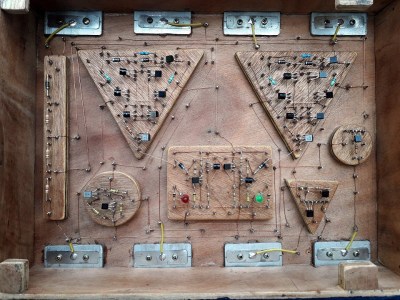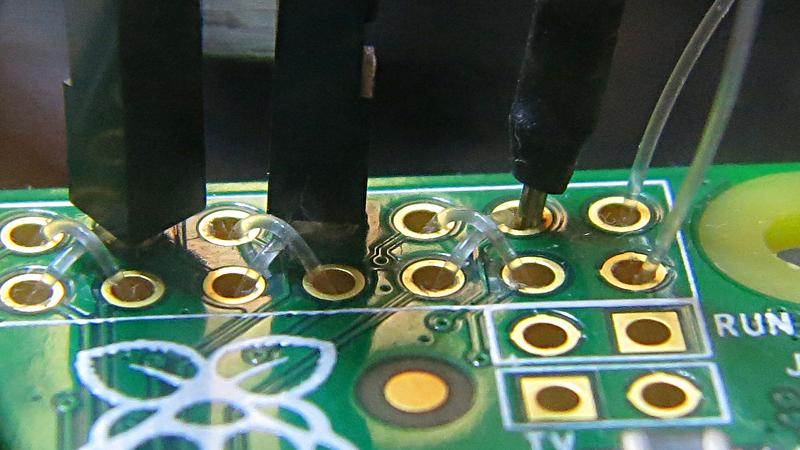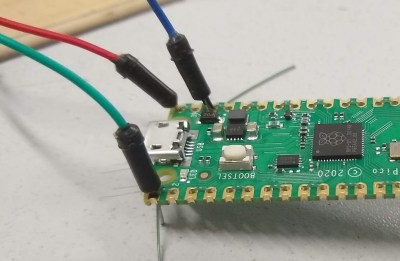Source: Kentucky.com -- State
Kentucky has reported a record COVID-19 test positivity rate of 14.46%, Gov. Andy Beshear announced Wednesday. “Folks, it’s clear Kentucky is now in a surge from Omicron, ” Beshear said … Click to Continue »
Source: Kentucky.com -- State
Kentucky has reported a record COVID-19 test positivity rate of 14.46%, Gov. Andy Beshear announced Wednesday. “Folks, it’s clear Kentucky is now in a surge from Omicron, ” Beshear said … Click to Continue »
Source: Slashdot
Federal courts have opened the door for what may amount to the most substantial wifi upgrade in over twenty years. From a report: On Tuesday, a U.S. Court of Appeals for the District of Columbia Circuit issued a ruling where it supported the FCC's decision to divvy up 1,200MHz of spectrum in the 6GHz band for unlicensed use, a move that paves the way for the eagerly anticipated move to wifi 6E. Prior to the ruling, wifi was limited to broadcasting over 2.4GHz and 5GHz bands. That new spectrum represents the single largest addition since wifi was first introduced in 1989, the Verge notes. To put that in perspective, prior to the FCC's additions, wifi operated with just 400MHz of the spectrum. With that in mind, this new ruling should essentially increase the space available to wifi by four times. When implemented, all this additional spectrum could provide enough capacity to allow seven maximum capacity wifi streams to broadcast in the same areas without interfering with one another, The Verge notes. Put more simply, this should translate to increased bandwidth with less interference for everyday users. Proponents of the FCC's decision, like agency Chair Jessica Rosenworcel, argue it will provide more wifi access in a greater number of places while simultaneously improving performance. All this extra space could also increase upload and download speeds as well.
Read more of this story at Slashdot.
Source: The Week: Most Recent Home Page Posts
Tuition would be lower if our society were stronger
Source: Hacker News
Source: OSNews
An Xlib compatibility layer implemented on top of the Haiku API, in order to run X11 applications on Haiku without an X server.
Xlib‘s API is relatively low-level, but it is just high-level enough that it can be emulated on top of a higher-level API like Haiku’s.
At present, it provides “most” commonly-used Xlib APIs, but many of them are stubbed or incomplete implementations. (GTK, with some hacks, can compile, link, and open a window before it runs in to missing functionality.)
This is crazy person work by Haiku developer waddlesplash. He also posted continuously updated progress thread on the Haiku website, which provides a lot more detail about the process, the current state, and possible future plans.
Source: Hack a Day

You asked for it, and now you’ve got it. It’s taken more than a decade of accumulated complaining, but this gigantic 555 timer IC has finally gathered enough psychokinetic energy to take corporeal form and demand fealty from the readers of Hackaday.
Or not. The less exciting explanation is that creator [Rudraksha Vegad] was looking for a way to combine his interests in discrete electronic components and woodworking. The result is an incredible build that’s more than just a conversation starter; this desktop-sized version of the iconic integrated timer circuit is fully functional. You can even hook it up to a breadboard, assuming you’ve got some alligator clips handy.
 Lifting the lid on this wooden “chip” uncovers an intricate hand-wired array of discrete components that stand in for the microscopic goings on inside the real thing. He’s even gone through the trouble of recreating the symbols for the comparators and flip-flops that you’d see in a diagram of a 555 using wooden shapes to elevate their respective components. It might not fit the classical definition, but surely this must count as some form of circuit sculpture.
Lifting the lid on this wooden “chip” uncovers an intricate hand-wired array of discrete components that stand in for the microscopic goings on inside the real thing. He’s even gone through the trouble of recreating the symbols for the comparators and flip-flops that you’d see in a diagram of a 555 using wooden shapes to elevate their respective components. It might not fit the classical definition, but surely this must count as some form of circuit sculpture.
[Rudraksha] credits several other projects for not just inspiring him to create his own mega 555, but for helping him wrap his head around the internal workings of everyone’s favorite IC. Using components he salvaged from old hardware, he says the project ended up being very educational for him. These days, when most makers are more likely to reach for a microcontroller than a logic chip, spending some quality time with transistors and passives can be quite illuminating.
Source: ToolGuyd

Harbor Freight has launched a new Bauer modular tool box system, and they encourage users to “compare to Milwaukee [Packout]”.
Not to mince words, this is no Milwaukee Packout competitor. The Bauer tool boxes have extremely lightweight load ratings, such as 25 lbs for the small tool box and 60 lbs for the rolling tool box.
Milwaukee Packout tool boxes can hold up to 75 lbs, and their rolling tool box is rated at 250 lbs if weight capacity.
So while Harbor Freight encourages shoppers to “compare to Milwaukee” on price, the Bauer tool boxes don’t compare on even ground with respect to features, construction, or specs.
This is still an interesting product line.
Harbor Freight describes the Bauer tool boxes as “incredibly rugged.” They also emphasize that their 5 options allow for “over 50 storage configurations.”
At the time of this posting, there are just 5 Bauer modular tool box and organizer options:
The pricing seems a bit high, as a 3-piece system built with a rolling tool box with small and large tool boxes would come out to be $140.
The Craftsman Versastack combo (with organizer instead of tool box) is $90 at Lowe’s, and the Craftsman Tradestack launched at $169 at Lowe’s. There’s also the Ridgid Pro tool box system 3pc combo, currently $119 at Home Depot, and a Hart Stack system that’s $89 at Walmart.
With Harbor Freight so focused on how their lower pricing compares to “competing” systems, one would think they would have been more conscious about how their pricing actually compared to true competitors’ modular tool box systems.
There are some interesting and notable features. The Bauer parts organizer, for instance, is said to be IP65-rated watertight and dustproof. All of the tool boxes look to have metal latches.

I’m a little hesitant about Bauer’s side latches, which are used to lock stacked tool boxes together. Maybe the images give a false sense of scale, but it looks like there is a tiny finger loop built into a sliding tab. It’s hard to say without seeing and feeling it in person, but this doesn’t look very user-friendly to me.
It’s unclear as to whether Harbor Freight has a broader lineup in mind for Bauer, and it will be interesting to see where they go with this. Maybe their more premium brushless motor Hercules cordless power tools could be bundled with Bauer tool boxes? There’s plenty of potential.
It’s always good to have more tool options, but how does Bauer differentiate from all of the other modular tool box systems currently on the market?
Source: Hack a Day

Working on a breadboard, one can get used to the benefits of being able to readily plug and unplug jumper wires to reconfigure a project. One could only dream of doing so with PCBs, right? Wrong! [Stewart Russell] recently shared a tip on Twitter on how to do just that, with the help of a little fishing wire.

The trick is simple: on any old development board that uses 0.1″ pitch headers, simply weave some fishing line through the plated through-holes in the PCB. Then, regular jumper wires can be inserted just like on a breadboard. The fishing wire has just enough give to allow the jumper wires to be jammed in, holding them steady and in good contact, while still allowing them to be easily removed.
[Hackspace Magazine] has raved about the trick, noting great success using 0.38 mm fishing line. Alternative methods involve using toothpicks, though we suspect solution is likely messier and less reliable.
If you’ve got your own tricks for prototyping quickly using development and breakout boards, be sure to share them below in the comments. Alternatively, send your best stuff to us on the tipsline!
Source: Hacker News
Source: Hacker News